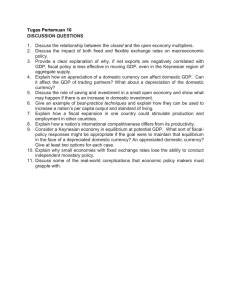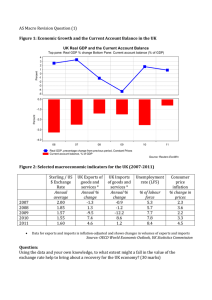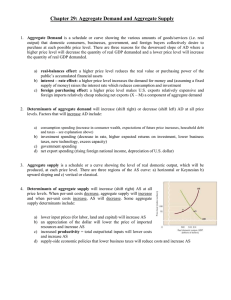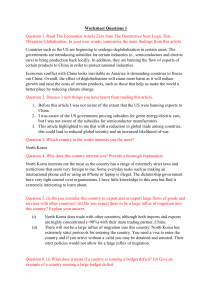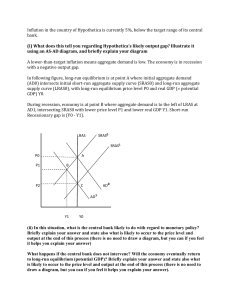UNIVERSITY OF MALTA ISLANDS AND SMALL STATES INSTITUTE
advertisement
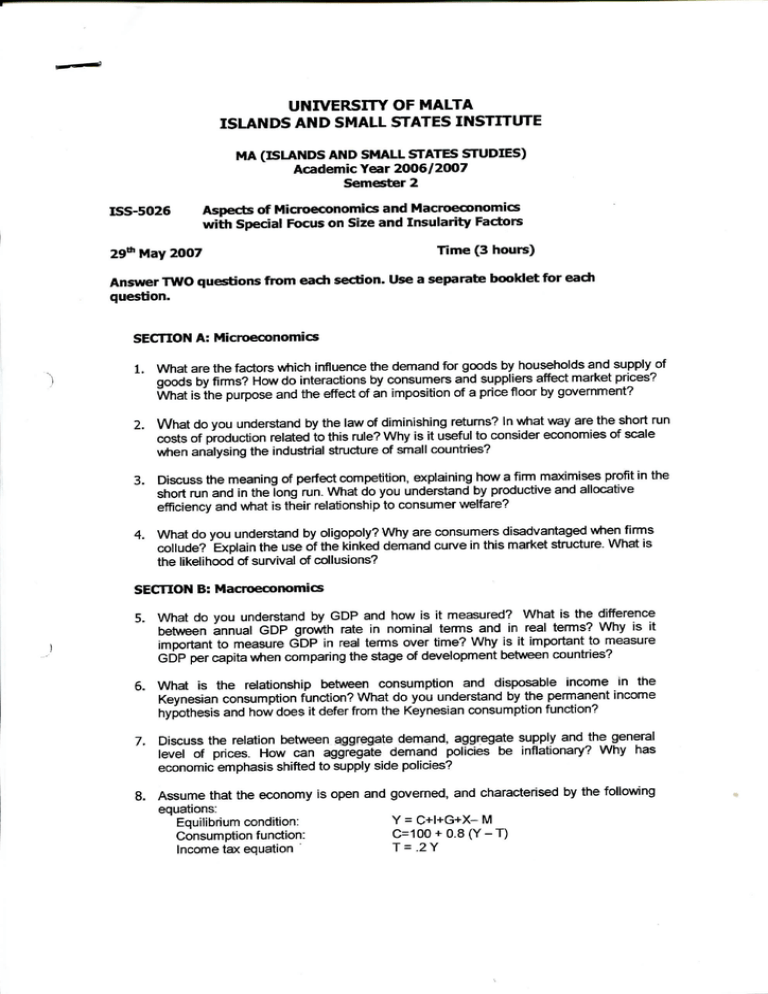
UNIVERSITY OF MALTA ISLANDS AND SMALL STATES INSTITUTE MA (ISLANDS AND SMALL STATES STUDIES) Academic Year 2006/2007 Semester 2 ISS-5026 Aspects of Microeconomics and Macroeconomics with Special Focus on Size and Insularity Factors 29th May 2007 Time (3 hours) Answer TWO questions from each section. Use a separate booklet for each question. SECTION A: Microeconomics 1. What are the factors which influence the demand for goods by households and supply of goods by firms? How do interactions by consumers and suppliers affect market prices? What is the purpose and the effect of an imposition of a price floor by government? 2. What do you understand by the law of diminishing returns? In what way are the short run costs of production related to this rule? Why is it useful to consider economies of scale when analysing the industrial structure of small countries? 3. Discuss the meaning of perfect competition, explaining how a firm maximises profit in the short run and in the long run. What do you understand by productive and allocative efficiency and what is their relationship to consumer welfare? 4. What do you understand by oligopoly? Why are consumers dtsadvantaged when firms collude? Explain the use of the kinked demand curve in this market structure. What is the likelihood of survival of collusions? SECTION B: Macroeconomics 5. What do you understand by GDP and how is it measured? What is the difference between annual GDP growth rate in nominal terms and in real terms? Why is it important to measure GDP in real terms over time? Why is it important to measure GDP per capita when comparing the stage of development between countries? 6. What is the relationship between consumption and disposable income in the Keynesian consumption function? What do you understand by the permanent income hypothesis and how does it defer from the Keynesian consumption function? 7. Discuss the relation between aggregate demand, aggregate supply and the general level of prices. How can aggregate demand policies be inflationary? Why has economic emphasis shifted to supply side policies? 8. Assume that the economy is open and governed, and characterised by the following equations: Equilibrium condition: Y = C+I+G+X- M Consumption function: C=100 + 0.8 (Y-T) Income tax equation T = .2 Y Imports M = .4 Y Autonomous expenditure: E = I + G + X = 50 + 30 *6Q where Y is income, C is consumption, T is income tax, I is autonomous investment, M is Imports and X is Exports. a. Derive an equation combining C, T, M and E, with Y as the subject of the equation. Find the equilibrium level of income b. Show how the equilibrium level of income is affected if exports increase by 10 units i.e. from 60 to 70. What is the value of the income multiplier? c. Explain your results, referring to the situation of a country which is heavily dependent on exports and imports



